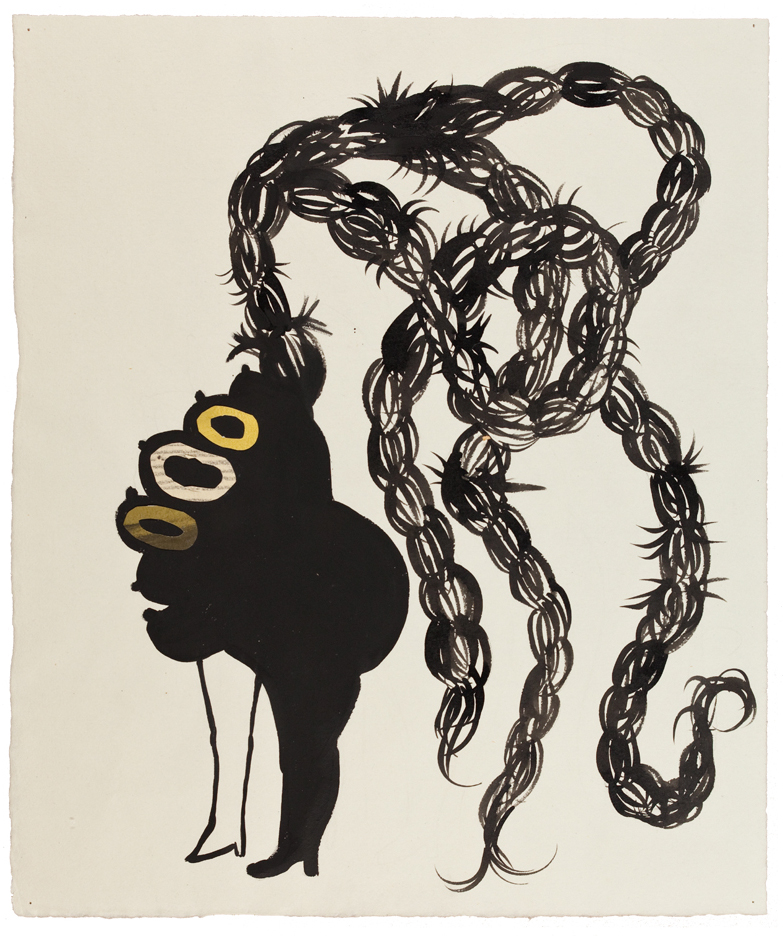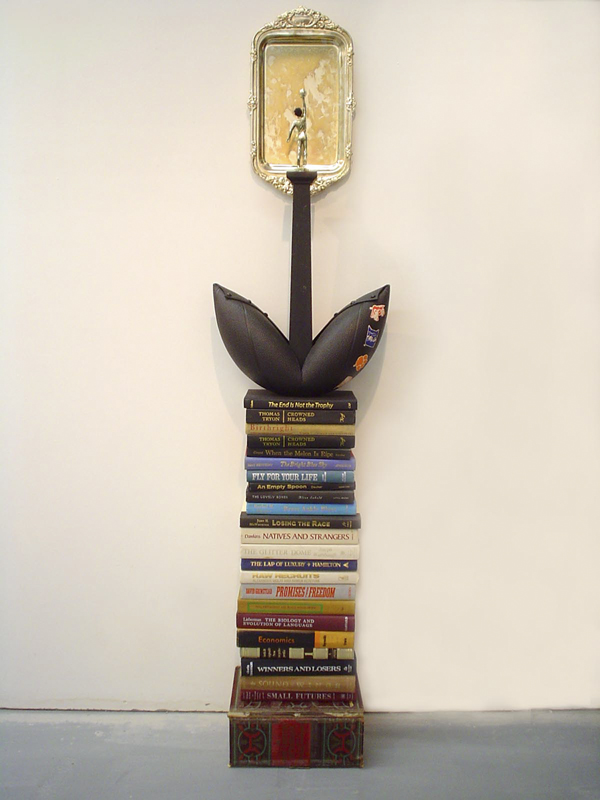
“Traces” of what was, and what makes us who we are
One of the first impressions that jump out when looking around at the group show “spillage: traces, evidence and presence” is the lack of color — no bright primaries, no tropical hues, despite the origins of the artists
at the Carol Jazzar garage gallery, from the South, the Caribbean, and Ecuador. No, this is a somber and intellectually challenging show, curated by William Cordova, where traces of the sometimes painful past — of societal confines, of racial and gender inequalities — are addressed, but in a subtle and quiet way. The colors here stick to off-white, the yellow of notebook paper, black pencil, burnt canvas, and all are either works on paper or sculpture.
On one wall hang drawings, some of which Jamaican-born artist Shoshanna Weinberger explains are representations of black curly hair, of black female bodies, with exaggerated dreads and butts. Once upon a time, she says about the inspiration here, black bodies from the colonial days of South Africa to the slave era in the Americas were studied like specimens, not as humans. Of particular interest, the non-white bodies of black women.
Facing each other on two other walls are stand-alone sculptures, one a brown and black suitcase with text written on it, another a stack of books with a small figurine of a sports player standing victorious on top. Both are beautiful just to looks at, but both have a message. The book sculpture is called “Eyes on the Prize,” a reference to both the Civil Rights era anthem and an athlete focusing on victory, by North Carolinian Andre Leon Gray. Did the sports hero step over books and learning to get to the top, or did it perhaps help him? Look closely, and the little silver figure has real hair, and his tiny image can be seen in the silver tray that acts as a mirror that tops the work. Very nice. In his other works, Gray’s etched words echo sports, hip-hop, and even black empowerment catch phrases.
On the floor in the middle of the gallery is a simple piece, made of linoleum tiles (a material that can bring up vivid memories to some of us) with four symbols — a trumpet, a belt, a machete and a microphone. A very masculine piece, from Ecuador’s Ronny Quevedo. Some of those symbols are repeated on his yellow notebook drawings on another wall.
In the in-house back gallery, three videos are part of the second exhibit, “places, spaces and ascension.” Local, Cuban-born artist Glexis Novoa has a travelogue of sorts on a tiny screen, a bumpy and washed-out drive from Wynwood up North Miami Ave., through the myriad of urban neighborhoods that make up that corridor. One is a piece based on a 1904 silent film about, well, a “Manic Chase.” And Cuba’s Hamlet Lavatida Cordovi’s video features an incredible soundtrack of a Japanese jazzy samba, to images of that country’s 1930s Communist party.
As might be obvious, there are many worlds and layers here worth exploring.
“spillage: traces, evidence and presence” through April 24, at the Carol Jazzar Gallery, 158 NW 91st St., Miami; 305-490-6906; www.cjazzart.com.
Recent Content
-
Artsarticle ·
-
Artsarticle ·
-
Artsarticle ·

